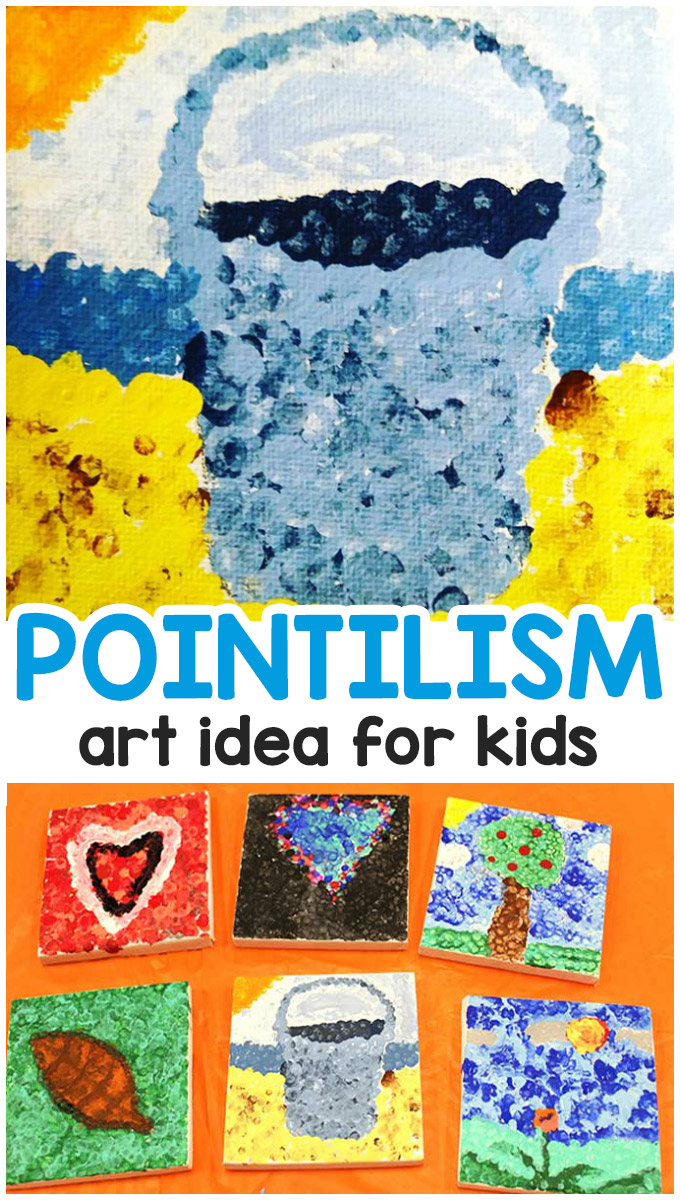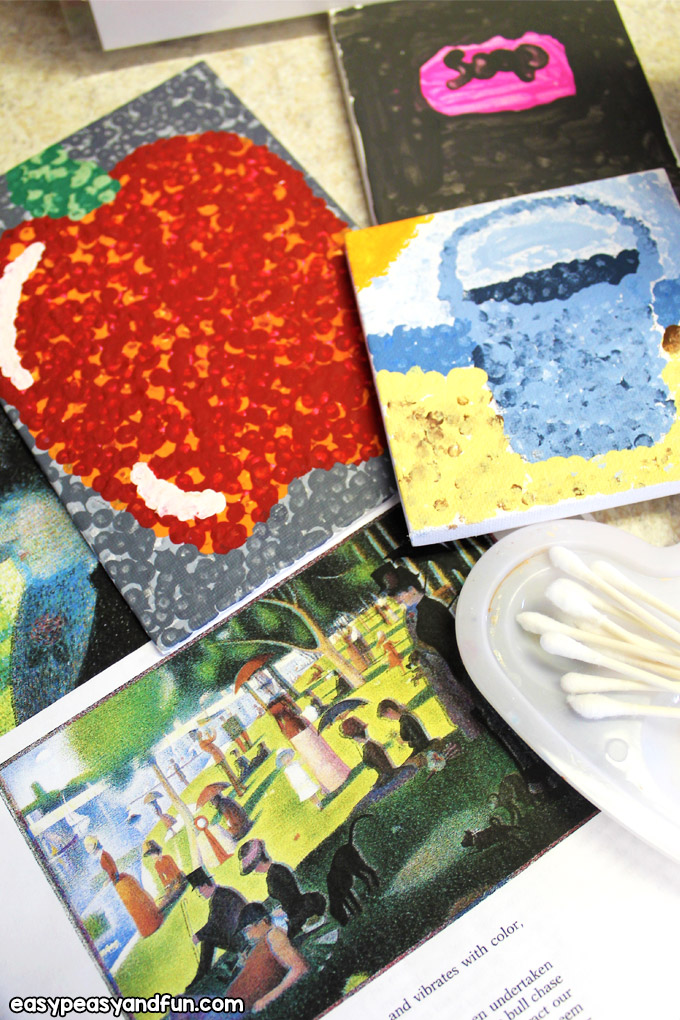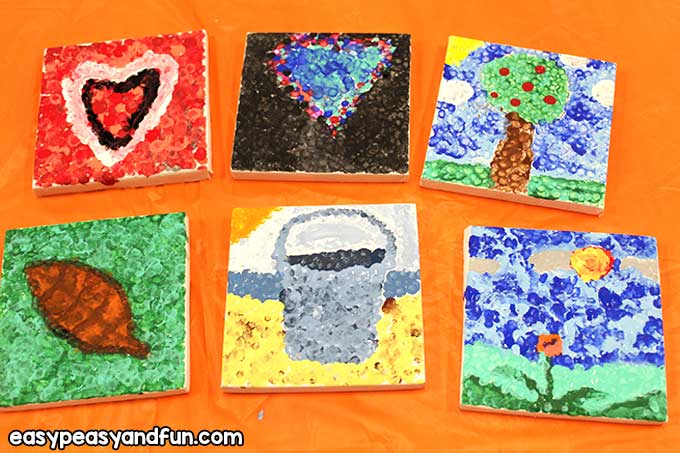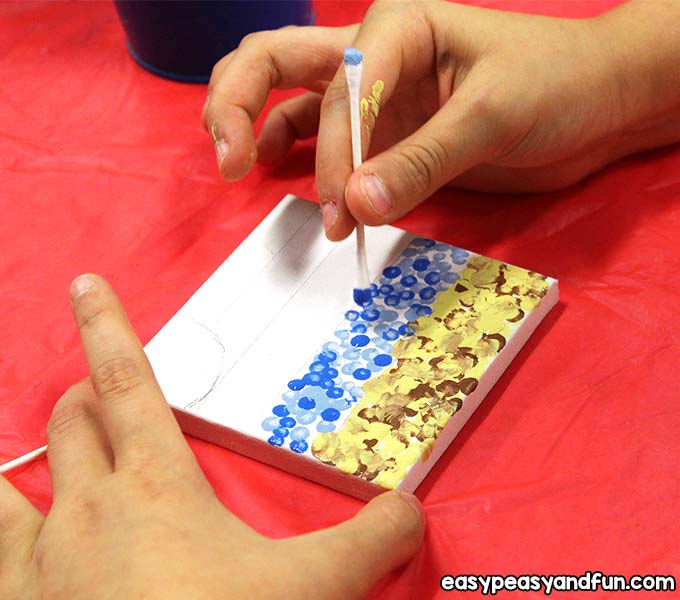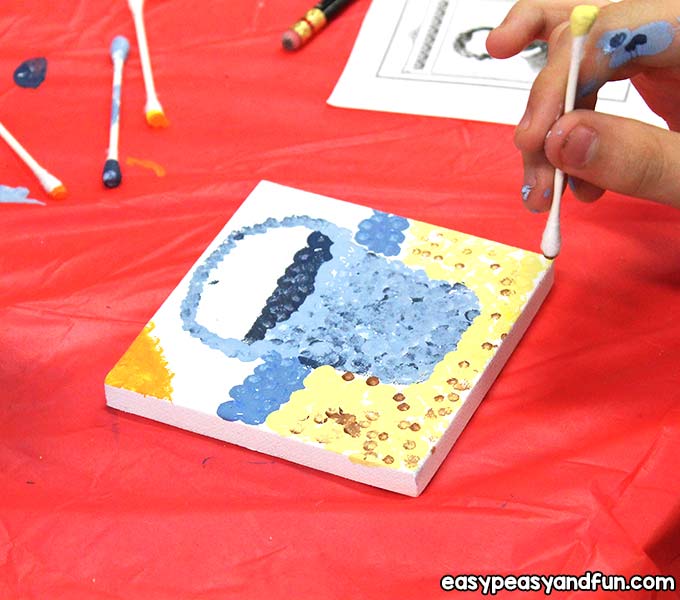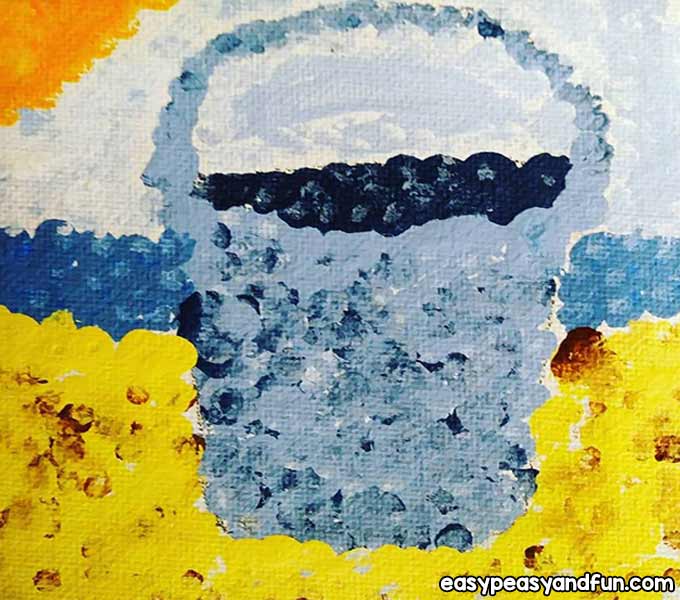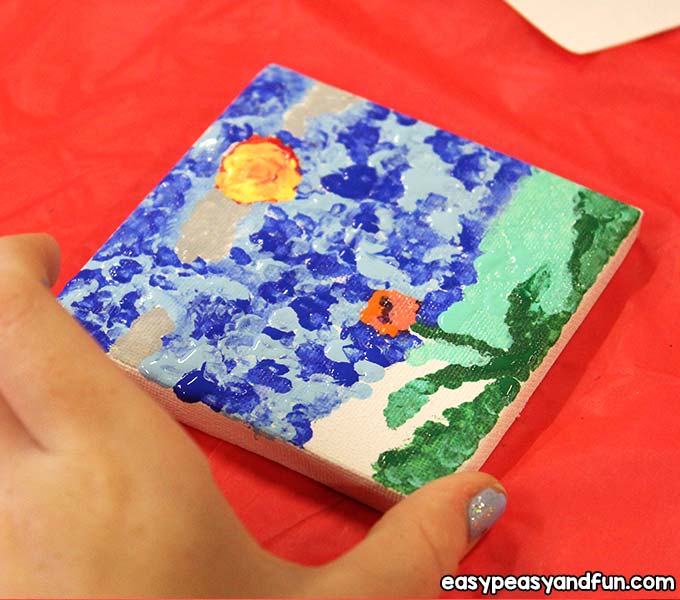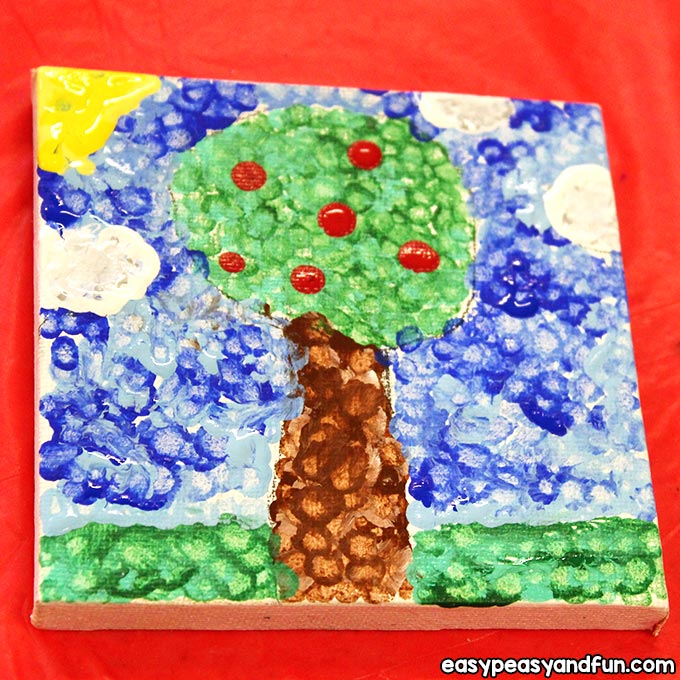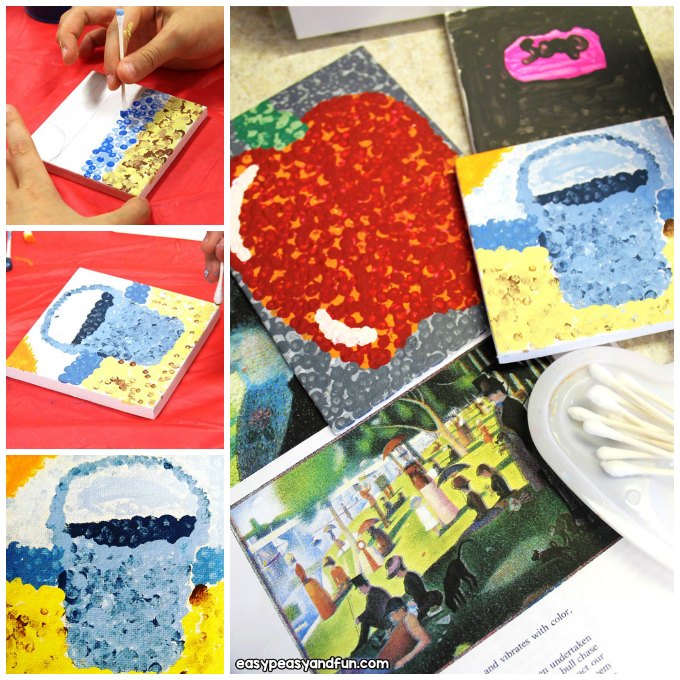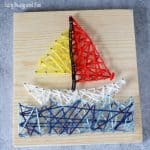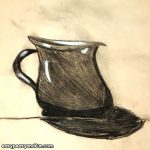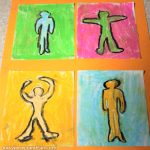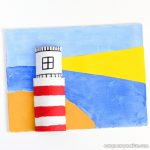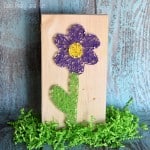Pointillism art lesson for kids is always a great one, as painting with Q-tips and other mediums to make dots that create a wonderful image as a whole is an exciting and fun journey.
This art lesson will give you some information on Seurat himself, so you can teach a little art history, and then go into how to create a pointillism piece easily.
*this post contains affiliate links*
George Seurat was an artist who created some amazing works of art by using a technique called pointillism.
When you view his paintings from a distance, they appear to be what you are used to seeing in a painting, with beautiful scenery and colors, but as you come closer to them, you begin to notice that there is more to them than originally expected. They are made up of dots.
You can teach this to a group or just your own children, just be sure when gathering supplies that you have one of everything listed for each person painting.
George Seurat was born in December of 1859 and lived until March 1891. He was French. His most famous painting is titled, “A Sunday Afternoon on the Island of La Grande Jatte”.
He was a very smart draftsman and artist who took the painting to another level with his use of color and techniques.
He came after Impressionism was popular as far as his prime, and his work is considered to be Neo-Impressionism or pointillism, which is where the painter showed urban scenery and landscapes but put together with different colored dots of paint.
Some of his earlier work does resemble the more popular Impressionist style of Monet and the like, but then it developed more over time into what he became famous for.
He understood the concepts of color theory very well and used colors beside each other to complement and make them work for him when placing them strategically in the paintings.
Georges Seurat Pointillism Art Lesson for Kids
What you will need:
- small canvas – I have used from 5” squares up to 8” x 10” size but if time is a factor (I recommend smaller for sure, as this takes time to do)
- acrylic paints in primary colors, plus a variety of other colors
- palette or paper plate
- Q-tips
- paper towels
- cup of water
- disposable tablecloth or drop cloth
- hand wipes
- pencil and eraser
Step by Step Instructions
Before you begin, go over the biography of Seurat and then explain the concept of pointillism to the kids a bit so they have a grasp on it before they start the pieces.
I have taught this a few times and found that if they jump right in, they can miss out on making it really work but assuming they know what to do.
Place the drop cloth or tablecloth down first and then give paint colors they choose on the plates, along with the other supplies.
The canvases may look small, but when you are using only dots to create the painting, it takes time. Before they start with the paint, they will need to choose a subject and lightly sketch an outline on the canvas of it.
Draw
They can draw lines to represent shading or areas where they want to change the colors up. No need to do much drawing, as it will just get covered up.
If you have a color wheel, refresh their memory on the colors, and especially the complimentary ones. Then, have them choose at least 2 main colors they want to have in their paintings.
Whatever the main colors are, they should also use the complimentary ones to those as well, so if they choose 2 colors, they should actually have 4.
Some kids will choose different colors that are not technically the “Complimentary” of the main ones, and that’s ok too, but it helps them choose if they are unsure.
Paint
Once the subject is drawn on, they can start dotting on the paint with the Q-tips.
Have them do one area at a time, such as background or foreground first, and then move on.
If their subject is red, using red and yellow dots on it, right beside each other would look great.
Then, green would be a great background color or accent to use in the next section….etc.
In one painting, which is shown in photos, of the sandy beach and bucket, he used brown and yellow for the sand and it made it really look great.
Kids will come up with some awesome combos, but sometimes they need help choosing too.
And if you have several paintings at once, be sure to keep an eye out, as some will just do solid colors only.
The best way to make the painting go faster too is to use 2 Q-tips at once. Dip them in the paint, dot them a few times and re-dip and repeat.
If you do the dots right up against each other it will fill up nicely. Leaving spaces between makes it harder to finish off well.
At this point, they just need to stay on task until the colors are all filled in.
Depending on the canvas size, they may get annoyed a bit if it’s taking a long time. I would suggest having them take a break for a minute between colors and resting their eyes and hands.
Some kids will have no trouble at all, but I’ve had a few who found it tedious.
Just encourage them that the work pays off and it looks great.
Want instant access to all of our printable crafts, activities, and resources?
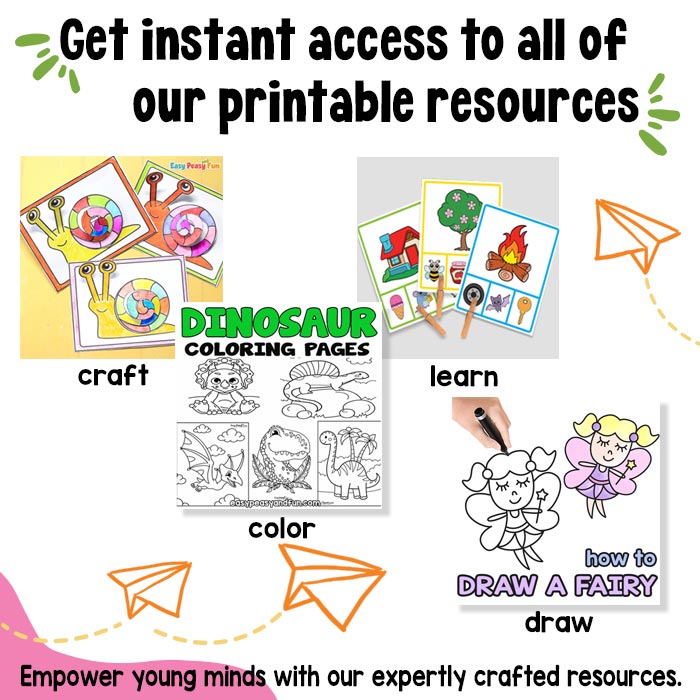
With thousands of crafts, activities, worksheets, coloring pages, and drawing tutorials to print, you will always have just the resource you need at your disposal. Perfect for parents and teachers alike!

